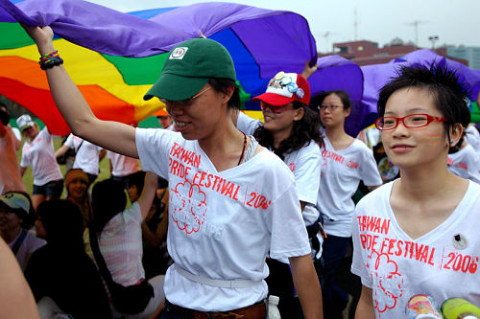Homosexuality in Traditional Asian Culture
With Taiwan the first country in Asia to legalise same-sex marriage, you’d be forgiven for thinking that the acceptance of homosexuality was new to Asian culture.
However, homosexuality was generally an accepted part of the culture in many Asian countries until the West introduced its puritanical Christian religious ideology and played an influential role in bringing an end to the long-standing traditions in this part of the world.
Take for example China, where records and accounts of homosexuality dating from Imperial China to the Chinese Cultural Revolution (1949), demonstrate that, bar a few ‘blips’ where it was denigrated, homosexuality was typically accepted in local Chinese culture.
A number of legends and texts rooted in ancient culture detail the degree to which same-gender relations were normalised and accepted.
To illustrate this, a writer from the Ming dynasty, wrote extensively about a part of society in which it was normal for married men to also take male lovers. It was also culturally accepted for these relationships to be taken to the next level, with formal ceremonies to officially proclaim the couple’s love for each other.
During the Han dynasty, it is documented that ten out of thirteen emperors were in relationships with male lovers in addition to their wives and concubines. We also have stories concerning the palace of the Yellow Emperor (2,600 BC) which housed a harem of both males and females.
Likewise, in Japanese ancient cultural history, homosexuality was again generally accepted.
Same-sex relationships were not uncommon during the pre-Meiji period in Japan between monks and students, and apprentices and teachers in the Samurai class. Same-sex relationships were also captured in literary works which suggest that, once again, it was a socially accepted practice.
Our understanding of the cultural norms across Asia comes from the reports of missionaries who went overseas to ‘proclaim the truth’.
Take, for example, a detailed account compiled by 16th-century missionaries to the Philippines, who illustrated the role of ‘asoqs’ in the local culture.
These individuals were described as dressing like women and so ‘effeminate that one who does not know them would believe they are women … they marry other males and sleep with them as man and wife and have carnal knowledge’
Another missionary compared some of the same-sex relationships he witnessed in China to Sodom. Taking this further, he then suggested that the geographical extremes experienced by the Chinese were a result of God’s curse.
A European missionary visiting Indonesia in 1544 observed in a letter to his Bishop that “Your lordship will know that the priests of these kings are generally called bissus. They grow no hair on their beards, dress in a womanly fashion, and grow their hair long and braided; they imitate female speech because they adopt all of the female gestures and inclinations. They marry and are received, according to the custom of the land, with other common men, and they live indoors, uniting carnally in their secret places with the men whom they have for husbands …”
Although individual Asian countries have shown differing degrees of tolerance to homosexuality throughout history, our understanding of prevailing cultural attitudes has generally seemed to signal acceptance in most Asian countries.
This acceptance changed however with the introduction of Western influence through colonisation, missionary endeavours or other means.
The Common-Wealth, for example, did considerable damage when it introduced laws forbidding sodomy. These laws continue in many of the countries in which they were first introduced.
The reformists of China in the early 20th century were greatly influenced by Western models and made efforts to bring China and its cultural practices in line with Western ideals.
An example of this relates to the Woman’s Christian Temperance Movement, founded in China by Christian missionaries, which heavily campaigned for the banning of foot-binding. Many The idea of homosexuality as a perverted act also took root in China about this time leading to the shunning of same-sex relationships. It wasn’t until 1997 that homosexuality once again become legal in China.
So, we can see, that although the legalisation of sex marriage has received a great welcome in Taiwan, historical acceptance across the region has been documented back to ancient times.
Had the influences of puritanical Christian missionaries and the Common-Wealth not had such a profound effect on Asian cultures, then it’s very possible that this acceptance may otherwise have survived into the modern age.
Relevant Blogs
10 Terrific Culture Tips for doing Business in the ASEAN Region
How is Thai Culture different to American Culture?
Image by Chun Li on Flickr (CC BY 2.0)
Related Posts
By accepting you will be accessing a service provided by a third-party external to https://www.commisceo-global.com/

 +44 0330 027 0207 or +1 (818) 532-6908
+44 0330 027 0207 or +1 (818) 532-6908
